 All Entries Tagged With: "Fire Protection Engineering"
All Entries Tagged With: "Fire Protection Engineering"
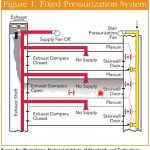
Smoke Management in High-Rise Structures
Smoke Management in High-Rise Structures BY JOSEPH CHACON AND STEVE KERBER Excerpt from Fire Engineering.com Most modern building codes define a high-rise structure as a building greater than 75 feet in height from the lowest level of fire department vehicle access to the highest occupiable floor. When fires occur in high-rise structures, the responding firefighters […]
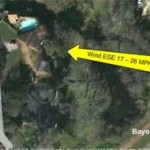
Wind Driven Fires
Wind Driven Fires Wind blowing into the broken window of a room on fire can turn a “routine room and contents fire” into a floor-to-ceiling firestorm. Historically, this has led to a significant number of firefighter fatalities and injuries, particularly in high-rise buildings where the fire must be fought from the interior of the structure. […]
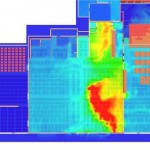
Fire Modeling Software from NIST
Fire Modeling Software These fire simulation programs were developed or sponsored by the Fire Research Division at the NIST. The list of programs is divided into two broad categories below: currently-supported software and archival (unsupported) software. In order to get further information or to obtain one of the programs, click on the appropriate name. […]

Required Reading: Impact of Ventilation on Fire Behavior in Legacy and Contemporary Residential Construction
Another must read for all Company and Command Officers: Impact of ventilation on fire behavior in legacy and contemporary residential construction, by Steve Kerber (2011) UL Report. Take some time to increase your proficiencies and compentencies. Executive Summary Under the United States Department of Homeland Security (DHS) Assistance to FirefighterGrant Program, Underwriters Laboratories examined fire […]
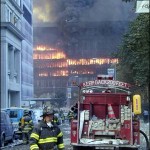
Final Report on the Collapse of World Trade Center Building 7, Federal Building and Fire Safety Investigation of the World Trade Center Disaster (NIST NCSTAR 1A)
Final Report on the Collapse of World Trade Center Building 7, Federal Building and Fire Safety Investigation of the World Trade Center Disaster (NIST NCSTAR 1A) Author(s): Gann, R. G.; Title: Final Report on the Collapse of World Trade Center Building 7, Federal Building and Fire Safety Investigation of the World Trade […]

FINAL REPORT: Federal Building and Fire Safety Investigation of the World Trade Center Disaster: Final Report of the National Construction Safety Team on the Collapses of the World Trade Center Towers (NIST NCSTAR 1)
Report of the National Construction Safety Team on the Collapses of the World Trade Center Towers (NIST NCSTAR 1) Author(s): Shyam-Sunder, S.; Title: Federal Building and Fire Safety Investigation of the World Trade Center Disaster: Final Report of the National Construction Safety Team on the Collapses of the World Trade Center Towers […]

NIST World Trade Center Disaster Study
World Trade Center Disaster Study On August 21, 2002, with funding from the U.S. Congress through FEMA, the National Institute of Standards and Technology (NIST) announced its building and fire safety investigation of the World Trade Center (WTC) disaster that occured on September 11, 2001. The NIST WTC Investigation was conducted under the authority of […]

Investigation of the World Trade Center Disaster
Investigation of the World Trade Center Disaster Summary: On August 21, 2002, NIST announced its building and fire safety investigation of the World Trade Center (WTC) disaster. The WTC Investigation was conducted under the authority of the National Construction Safety Team (NCST) Act, which was signed into law on October 1, 2002. Description: […]

NIST Advanced Fire Service Technologies Program
Summary: This program focuses on improving the safety and effectiveness of fire fighters by enabling the effective use of existing and new technologies and tactics. Increasing the safety and effectiveness is critical to reducing fire fighter fatalities and injuries, as well as the cost of fire service. For existing and emerging technologies, performance must be […]

NIST to Conduct Technical Study on Impacts of Joplin, Mo., Tornado
The National Institute of Standards and Technology (NIST) today* said that it will conduct a full technical study on the impacts of the May 22, 2011, tornado that struck Joplin, Mo. The remains of what was once a home improvement store in Joplin, Mo., showing the destructive power of the tornado that struck the area […]
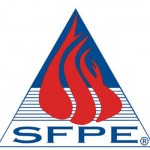
Society of Fire Protection Engineers Activities
Free Webinar: A Focus on the Next Generation of Open-Area Smoke Detection Technology: Register now for a free webinar on smoke detection in large, open spaces. The webinar will be conducted on Thursday, July 28, at 2:00 pm, U.S. Eastern Time. SFPE will award 0.1 CEUs for participating in the entire webinar. For […]

Fire Behavior 101; Taking it to the Streets
Fire Behavior Fire Dynamics Fire Dynamics is the study of how chemistry, fire science, material science and the mechanical engineering disciplines of fluid mechanics and heat transfer interact to influence fire behavior. In other words, Fire Dynamics is the study of how fires start, spread and develop. But what exactly is a fire? Defining Fire […]
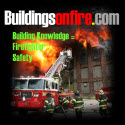
One Meridian Plaza High Rise Fire: Twenty Years Ago
Fire Operations One Meridian Plaza On what began as an uneventful Saturday night twenty years ago, a fire on the 22nd floor of the 38-story Meridian Bank Building, also known as One Meridian Plaza, was reported to the Philadelphia Fire Department on February 23, 1991 at approximately 2040 hours and went on to burned for […]
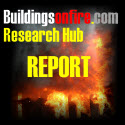
Impact of Ventilation on Fire Behavior in Legacy and Contemporary Residential Construction
Impact of Ventilation on Fire Behavior in Legacy and Contemporary Residential Construction Impact of Ventilation on Fire Behavior in Legacy and Contemporary Residential Construction Under the United States Department of Homeland Security (DHS) Assistance to Firefighter Grant Program, Underwriters Laboratories examined fire service ventilation practices as well as the impact of changes in modern house […]
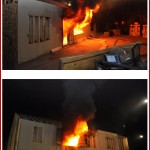
Tactical Patience and the New Considerations of Ventilation on Fire Behavior in Legacy and Contemporary Residential Construction
Impact of Ventilation on Fire Behavior in Legacy and Contemporary Residential Construction For many of you that have been following my writings and perspectives on building construction, firefighting, command risk management and operational excellence for firefighter safety have long recognized that I have been promoting and advocating the fact the fireground is changining, our stratgies […]























